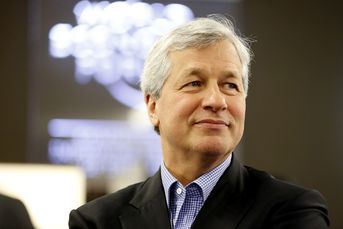The resilience of independent broker-dealers

While the RIA channel is on the ascendant and the advisor population is not growing fast enough to meet demand, don’t count out independent broker-dealers.
Two enduring characteristics of the retail securities business are its focus on sales and its cyclicality. While the products and services sold by registered representatives have changed over the years, along with the sources of compensation, broker-dealers are salespeople by nature in a business that always has had its ups and downs.
As noted recently by senior columnist Bruce Kelly, independent broker-dealers enjoyed a cyclical boost last year from an unexpected source. Traditionally, the feast-or-famine nature of the brokerage business has been tied to the mood of investors.
When Wall Street excites and stocks rise, America usually swoons — and broker-dealers share in the love through the public’s demand for investments. When the market periodically heads south and love turns to worry, then panic and disgust, broker-dealers share in the pain. In the past, that pain has taken the form of sharp drops in revenue and earnings as trading dried up and commissions shrank.
CYCLICAL FORCES
The shift to fee-based business has dampened the roller-coaster swings of the past, even if not totally severing the industry’s ties to the vagaries of equity markets. But a different cyclical force has entered the picture in recent years — interest-rate movements.
Usually, the absolute level of interest rates doesn’t matter much to broker-dealers. What’s important is the spread between their cost of money and what they earn on it.
For independent broker-dealers, higher rates have been like drought-ending rain.
Since the cost of the money lying idle in customer accounts is zero and a broker-dealer can earn a sliver on secure short-term investments, those slivers can add up. Unless, of course, interest rates fall to zero, in which case interest income at B-Ds also falls close to zero.
While the rising interest-rate cycle of the last year may be pushing the nation into a recession, for independent broker-dealers, higher rates have been like drought-ending rain.
Last year, commission revenue at IBDs continued to fall, but “other” revenue — which includes interest on margin loans and from investing idle cash balances — rose by more than 30% at some of the largest independent firms. Increases of more than 40% weren’t uncommon. So, while few B-D executives are likely to agree with the Fed’s decision to push rates to zero in the first place or the timing of its decision to reverse course, there is no doubt many are thrilled that the cycle has turned.
As for the other constant of broker-dealers — salesmanship — independent firms have adapted to customer preferences by becoming RIA-like and promoting themselves as such.
They also actively recruit, wooing RIA-like group practices and individual representatives, often from the wirehouse channel. While the RIA channel is on the ascendant and the advisor population is not growing fast enough to meet demand, don’t count out independent broker-dealers.
Resilience is in their DNA.
Here’s why lending products belong in client portfolios
Learn more about reprints and licensing for this article.







